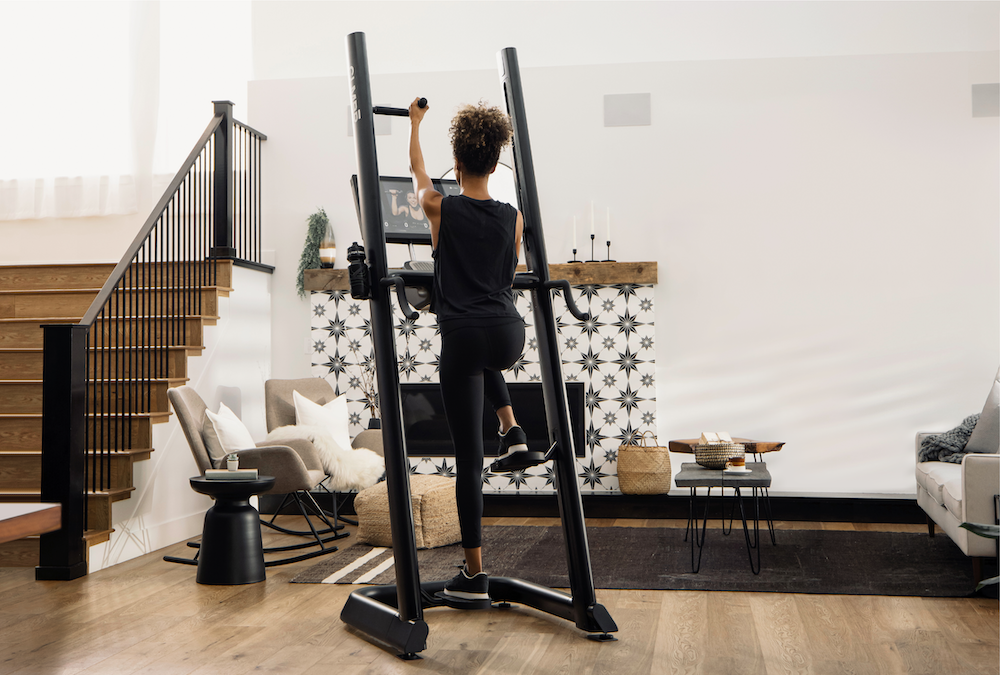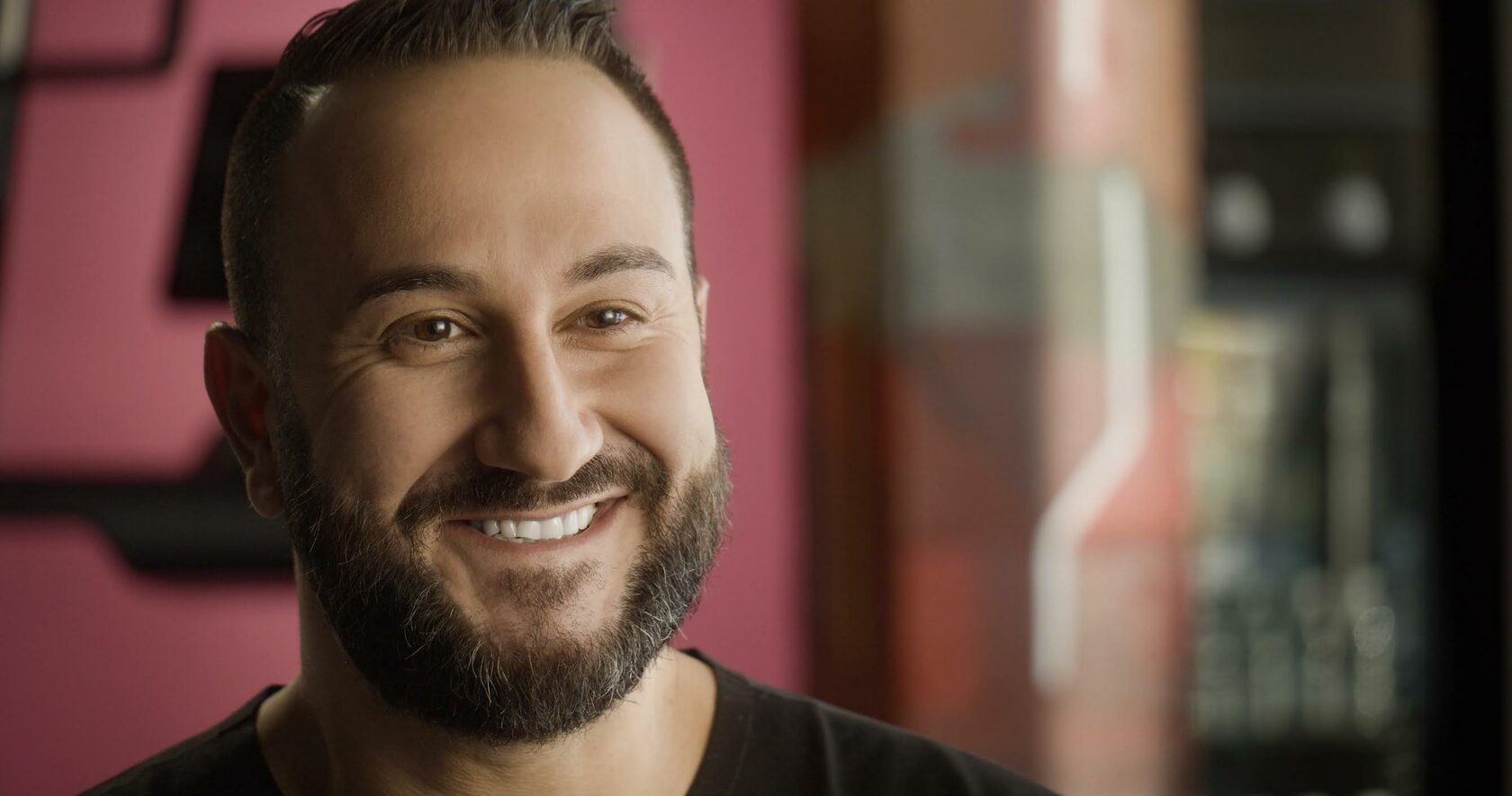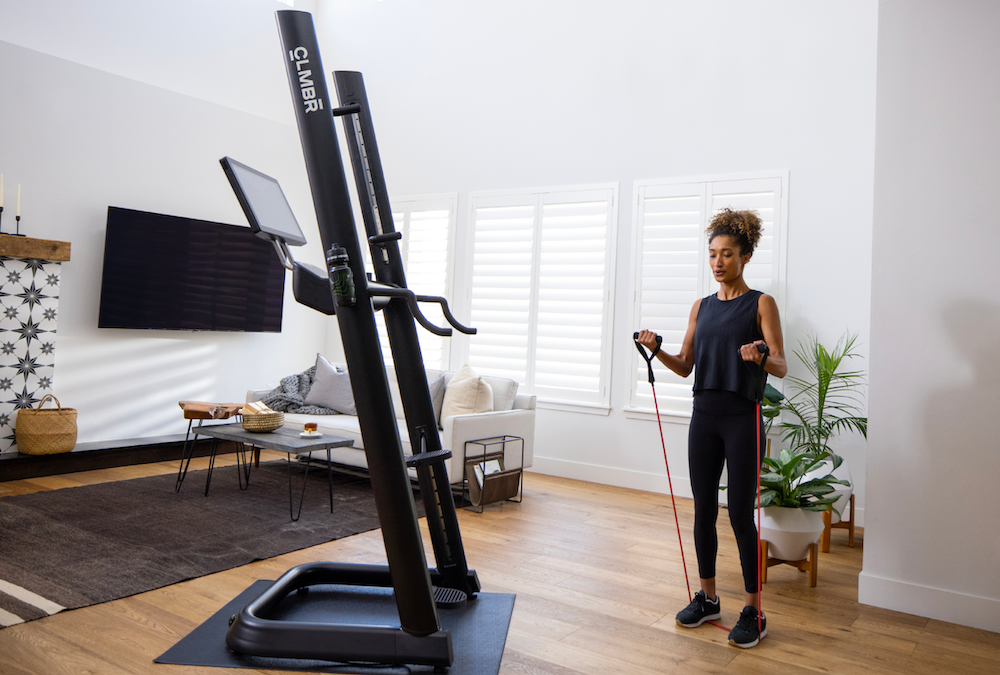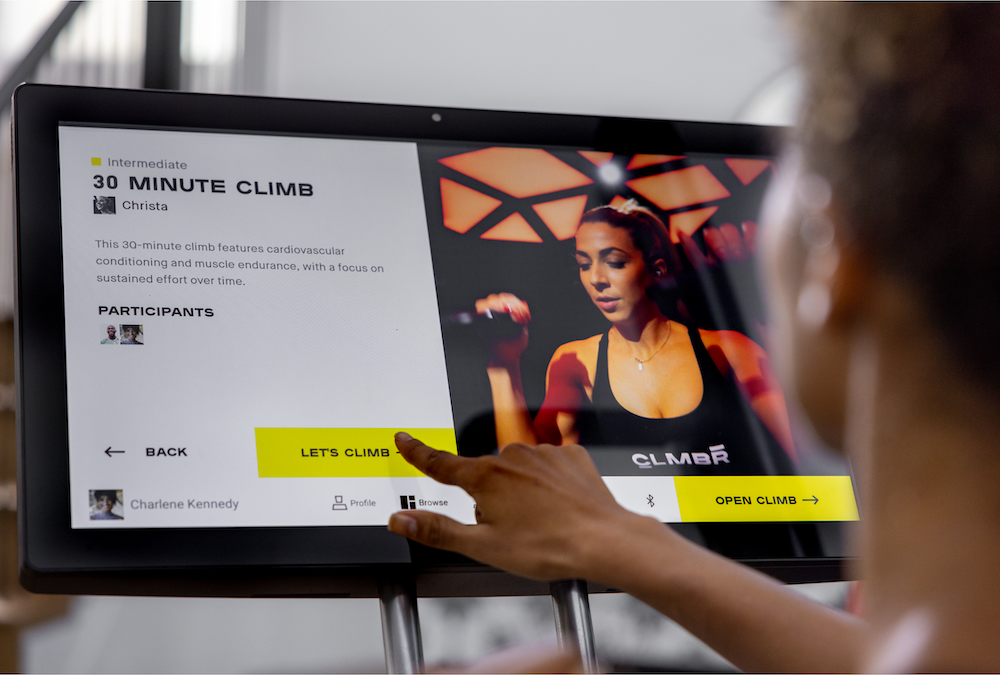"Climbing has the widest total addressable market", says Avrum Elmakis, founder and CEO of CLMBR, an ergonomic and innovative vertical climbing machine for the home. He adds: "You'll see CLMBR as an option in every gym over the next two years".
At CLMBR, the serial entrepreneur leads a team of design, fitness, and tech visionaries whose mission is to revolutionize the climbing machine and empower every person to achieve more with greater efficiency.
Founded in 2018, the company is currently in is in a launch and stealth mode. CLMBR brings together an innovative vertical climbing machine design with an engaging platform of world class fitness instructors and strong community engagement. It's the first vertical climber to feature a large-format touch display with on-demand, instructor-led classes.
Avrum Elmakis about Avrum Elmakis
You’re a first-generation American , how did this impact you as an entrepreneur?
I grew up in a situation where education, entrepreneurship, and hard work ethic were all things encouraged and stressed by my parents, which I don’t think are uncommon for folks that settle in a new country.
I’m just grateful and fortunate that the US is a great place for opportunity, where whatever your idea is, you can typically follow that. And hopefully, there’s a marketplace on the other side of it. But just having a supportive backdrop for entrepreneurship is critical.
Avrum Elmakis about market trends
What do you think is currently the most underestimated trend in the market, which nobody pays attention to, but should?
The modality, which is where CLMBR comes in. For far too long we’ve assumed that the health choices we’re given are the right choices — whether that be on the data, sleep and cognitive science, or how bio-mechanically the human body should move. I believe we’re going to see a lot more knowledge and information shared and exposed in areas that have been known but never popularized, because it’s expensive, new, and there’s a lot of education required.
We saw the exact same thing in the car business and the electric car. We’ve had traditional cars forever, but then you use a product like Tesla and realize how much superior it is to the existing choices you had, whether it’s environmental- or technology-related. It creates a cultural shift without any marketing budget and never one commercial on TV. Tesla is an example of a company that’s created something compelling through knowledge and use case of the product to appeal to a wide variety of folks.
To me, that’s a very interesting analogy when we think about the pursuit of all of these different fitness modalities to explore. It’s intriguing — and I don’t believe that it’s happened in the fitness industry yet.

What things, other than the modality, are the traditional fitness players overseeing in this space?
As with any type of business in macro segmentation, it’s very easy to do what you know because it works and to not change with the times. But what we’re seeing from the consumer — pre-, during, and certainly after Covid — is the desire to have more of an omni-channel connected experience with integrated use of technology.
"The consumer’s interest is driven by convenience, accessibility, data, and metrics. So I don’t see a world in which you can’t change to adapt to what the consumer desires and needs, even if it’s in a small way; or a world in which a traditional gym doesn’t begin to integrate those things, whether it be with companies like Peloton and CLMBR, or by having more complex metrics in a user account."
I think that’s the way that the world is moving: integrating technology and experiential data and uses of data into how people pursue their fitness journey, whatever that may be.
Where do you see the future of the fitness and health industry in the next three to five years?
You’re going to see a lot more data sharing and integration of wearables, helping to guide what workouts we do and why, whether at home or they are in a gym setting. More data will inform our decisions around questions like: “How did I sleep for the past two days? What level of training intensity should I use?”.
I think knowledge will be shared – in terms of the quality of exercise – with a more omni-channel approach than what was historically not the case with gyms and home products. I see everything existing seamlessly and in an integrated environment.

Avrum Elmakis is a serial entrepreneur who has founded and sold a number of successful businesses. On top of heading and founding CLMBR, is also the owner of two Rise Nation climbing studios in Colorado. In addition to serving as chairman of the board of TDBBS (Top Dog Best Bully Sticks), his natural dog chews and treats business, which scaled quickly into a behemoth in the pet industry, he is a member of the Young President's Organization (YPO).
Avrum serves on the boards of Boys and Girls Club of Metro Denver, Lumena Labs, and the James Madison University Entrepreneurship Council. In 2013, he won the Ernst & Young Entrepreneur of the Year Award.
Avrum Elmakis about his company
Why did you choose climbing as a modality and what target audiences do you address?
Climbing maintains a neutral spine alignment, has incredible amounts of efficiency in terms of time to work out and offers correct body position and form versus other modalities. So, we see this as a huge market opportunity with the widest total addressable market across any machine. It includes:
- People recovering from medical events or injuries: whether recovering from a medical event, stroke, heart attack; or from a physical event like a knee or low back pain (which is one of the most common things that causes people not to exercise).
- Professional athletes (who are also our investors). They have the ultimate choice in what modality to use to get ready to perform their sport at the very highest levels.
- People who are short on time to exercise: Really speaking to these people is where we believe we are different and where we win. We don’t see this as a short- or medium-term opportunity, but more as a kind of reeducation.
What’s one target audience that you are not addressing that you should?
The aging population. I think that longevity and mobility of our aging population should be an area that concerns all of us that make products, whether they’re connected or not; at home or in the gym.
I don’t think that folks over a certain age are being talked to and properly integrated into these products. So it’s a point for me to try to be more inclusive. Because of the interviews I’ve conducted, all of our products speak to healthy, younger to middle-aged people. But movement, flexibility, and mobility all lead to longevity and a healthier quality of life. So that’s one of the areas of focus for me and CLMBR, and I believe should be for all of us.
What makes CLMBR really different from other Peloton-like models in terms of technology and the business model
I started the business because I wanted to change how people moved. So it starts primarily with the modality. Rather than cycling, rowing, and running on a treadmill — which is very popular and commonplace — we use the cross-crawl-climbing motion: a full-body, no-impact exercise. This is our primary differentiator.
"From a content standpoint, our intention is to create a more global presentation of content that’s very differentiated from what is in the marketplace today. We’ll have traditional head-on, video-on-demand instruction available, but we’re also exploring different types and styles."
There are a lot of ways to motivate people than just traditional head-on video instructions — some of those revolve around data visualization and could be moved on the path of “gamification”; while others work with auditory sensors, rather than just traditional video.
Do you define your company more as as a content or fitness company?
I don’t think they’re mutually exclusive. I don’t think you can have one without the other. Everything starts with the modality, the machine, its safety profile, and the addressable market.
Then, it’s about being obsessive over the consumer: from customer service and their experience with CLMBR corporation, all the way to asking “How are we motivating people so that they say: ‘Gosh, this is so exciting, I want to do it again!’, or so they’ll want to compete with others or integrate into the community?”. But in my opinion, it really does start with the actual modality that you’re choosing to move with.

Which market is more important for you now and in the future — the commercial market, B2B market, or the B2C market, and why?
It’s definitely the B2C market and consumers at home, while still having a presence in the B2B market. It’s not one over the other, but certainly, the scales are tipped more to the home user — that’s where our efforts are going, although we’re seeing strong interest from both.
It may be more expensive for a company to market to the consumer, but I also think that the consumer drives the B2B market. Let’s take Peloton: in the early days, it was completely B2C. Then, businesses like hotels and gyms said: “This is really cool. Let’s see what happens when we bring this technology in for our users.”
The consumer is an engaged subscriber who is continuously downloading and using content over time; versus a B2B business application, which tends to be a one-time purchase, and not that that involved from a continuity standpoint. They’re both great and interesting markets that have very different characteristics.
You said that you’re not going into other verticals. Is that still the case? If so, what are the future engines of growth for your company?
Yes, I believe that that focus is important, especially for young start-up companies. It’s easy to be distracted. So, we’re focused on CLMBR and climbing as the pinnacle of modalities. We believe that there’s a tremendous amount of growth both in the United States and abroad over time because it’s not something that’s nearly as commonplace as cycling or running on a treadmill.
We inherently go back to the fact that it’s important, no matter where we are in the world, to recognize that it’s a good idea to move and to pursue fitness, but there are different qualities and scores associated with what movements we choose to pursue.

Avrum Elmakis about the future
In the future, will consumers choose CLMBR and connected home fitness over a gym membership?
I think it’s uniquely personal to the individual. Some people go to a gym for the community, congregation, and social networking; others for fitness. I think gyms will roar back because nothing takes the place of human social interaction, and we need it.
But it’s about what you do while you’re there, and the choice you make when you’re at home. If given the opportunity to make an educated decision, whether it’s at the gym or at home, customers will look for things that are healthy and efficient, and that’s where CLMBR succeeds.
So do you see a scenario where one consumer or one household will have a CLMBR, a Peloton, and another connected fitness equipment at home? Or would they have to go for just one device?
It starts with whether or not people can afford it. But yes, the hypothesis is that people will have two devices, even with limited home space — because firstly, doing the same thing over and over again is repetitive and can be boring.
Secondly, mixing up your routine is a common thing to do. This speaks to what CLMBR is all about. We are a space-saving type of device, very different from a bicycle, rower, or treadmill. We use the air space — the vertical space in our homes, versus a lot of horizontal space.
"From an investor standpoint, I believe that in the near future — let’s say in six months to three years — there’s going to be a lot of consolidation. Investors will come in, acquire and scale up a platform of these devices. It will be more of an omni-channel approach to modality, so you could theoretically see a climbing, rowing, and cycling or running device all under one umbrella subscription. I think many of the big companies are attempting to pursue that strategy now."
Will CLMBR be replacing traditional gym equipment in the gym?
"You’ll see CLMBR as an added option in every gym around the world over the next two years, but not necessarily a replacement."
When we think of traditional boutique exercise, it’s usually: “Run on this treadmill for 15 minutes, then do some weights, then run on the treadmill for 15 more minutes”. But this isn’t a product that addresses the needs of the consumer. For example, my mother can’t use a treadmill as she had a knee replacement, therefore she’s excluded from that activity.
So yes, CLMBR may be replacing traditional equipment in some facilities. But more importantly, you’ll see it as an added modality that serves a very wider audience — a much wider audience than otherwise would be the case.
Avrum Elmakis was one of the speakers at FitTech Summit 2021. Subscribe to our mailing list here to stay up-to-date with our future events.
